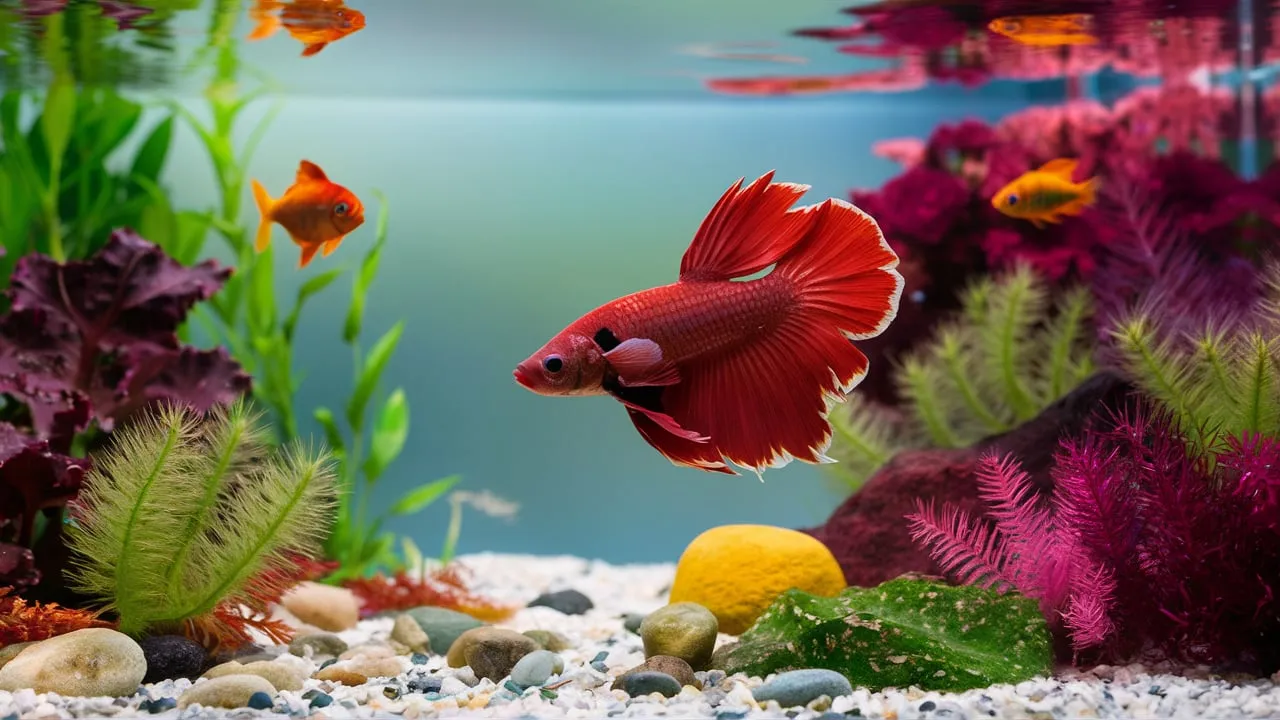Betta fish, also known as Siamese fighting fish, have captivated the hearts of aquarium enthusiasts worldwide. These vibrant and graceful creatures are not only visually stunning but also possess a unique set of behaviors and care requirements that make them a fascinating addition to any home aquarium. In this comprehensive guide, we’ll delve into the intricate details of betta fish, their water needs, and how to provide them with the optimal living environment.
Understanding Betta Fish Water

Betta fish, scientifically known as Betta splendens, belong to the Osphronemidae family, which is native to the shallow waters of Southeast Asia. These fish are renowned for their vibrant colors, flowing fins, and impressive display of aggression towards their own kind. Betta fish come in a variety of colors, including red, blue, green, and even multicolored varieties, each with its own unique charm.
Betta Fish Behavior
Betta fish are known for their territorial and aggressive behavior, particularly towards other male betta fish. This behavior is an evolutionary adaptation that helps them establish dominance and protect their territory in their natural habitat. In the aquarium setting, it’s important to house betta fish individually or with compatible tank mates to avoid conflicts and ensure their well-being.
Betta Fish Habitat
In the wild, betta fish thrive in slow-moving, shallow waters, such as rice paddies, drainage ditches, and small streams. These environments provide them with the necessary cover and oxygenation they require. Replicating these conditions in a home aquarium is crucial for the health and happiness of your betta fish.
Betta Fish Water Requirements
One of the most critical aspects of betta fish care is the water quality and parameters. Betta fish are sensitive to water conditions and require specific parameters to thrive.
Water Temperature
Betta fish prefer a water temperature range between 75°F (24°C) to 82°F (28°C). Maintaining a consistent water temperature is essential, as sudden temperature fluctuations can stress and potentially harm your betta fish.
pH and Water Hardness
Betta fish do best in slightly acidic to neutral water, with a pH range of 6.5 to 7.5. They also prefer soft to moderately hard water, with a general hardness (GH) between 5 to 15 dGH.
Water Filtration and Aeration
Betta fish require a gentle water flow and adequate oxygenation. While they can survive in stagnant water, it’s recommended to use a low-flow filter or hang-on-back filter to maintain water quality and provide subtle water movement. Additionally, incorporating an air stone or surface agitation can help increase dissolved oxygen levels.
Water Changes
Regular partial water changes are crucial for maintaining the water quality in a betta fish’s aquarium. Depending on the size of the tank and the number of inhabitants, it’s generally recommended to perform a 25% to 50% water change once a week.
Creating The Ideal Betta Fish Habitat
Providing the right environment for your betta fish is essential for their health and well-being. Here are some key considerations when setting up a betta fish aquarium:
Tank Size and Decor
Betta fish do not require large aquariums, and a minimum tank size of 2.5 gallons (9.5 liters) is generally recommended. However, a larger tank, such as a 5-gallon (19-liter) or 10-gallon (38-liter) setup, will provide more swimming space and allow for better water quality maintenance.
When it comes to tank decor, aim for a natural-looking environment with live or silk plants, driftwood, and smooth rocks. Avoid sharp decorations that can tear the delicate fins of your betta fish.
Lighting and Hiding Spots
Betta fish appreciate a moderate level of lighting, as they are sensitive to bright, direct light. Provide a combination of natural and artificial lighting to recreate their natural habitat. Additionally, include hiding spots, such as caves or dense plant cover, to allow your betta fish to feel secure and retreat when needed.
Tank Maintenance and Water Quality
Consistent water quality monitoring and maintenance are crucial for the well-being of your betta fish. Regularly test the water parameters, perform partial water changes, and maintain a clean, well-cycled aquarium to ensure your betta fish thrive.
What Are The Best Tank Mates For Betta Fish In A Community Aquarium?
Here are some good tank mates for a betta fish in a community aquarium:
- Corydoras catfish – These peaceful bottom feeders are a classic betta tank mate. Choose smaller species like the pygmy cory.
- Tetras – Small, active schooling fish like neon tetras, cardinal tetras, or ember tetras can work well. Avoid larger, more aggressive tetras.
- Rasboras – Similar to tetras, smaller rasbora species like harlequin rasboras or mosquito rasboras are good options.
- Guppies – The long fins of male guppies can sometimes provoke a betta, so female guppies are better.
- Platies or Swordtails – These livebearer fish are generally peaceful and make good tank mates.
- Pygmy Cories – Tiny bottom dwelling cory catfish add interest without competing with a betta.
- Shrimp – Dwarf shrimp like cherry shrimp or amano shrimp are great cleanup crew mates.
The key is to choose peaceful, community-friendly fish that are not too large or boisterous. Avoid anything that may nip at a betta’s fins or compete for the same space and food. Provide plenty of plants and hiding spots as well.
Conclusion
With information of Betta Fish 247 by understanding the specific water requirements and creating an ideal habitat for your betta fish, you can provide them with the best possible living environment and enjoy the captivating beauty and charm of these remarkable aquatic creatures.

Related Posts
Female Betta Care: A Comprehensive Guide
What Are Clamped Fins On Betta?
How Many Betta Fish Diseases?